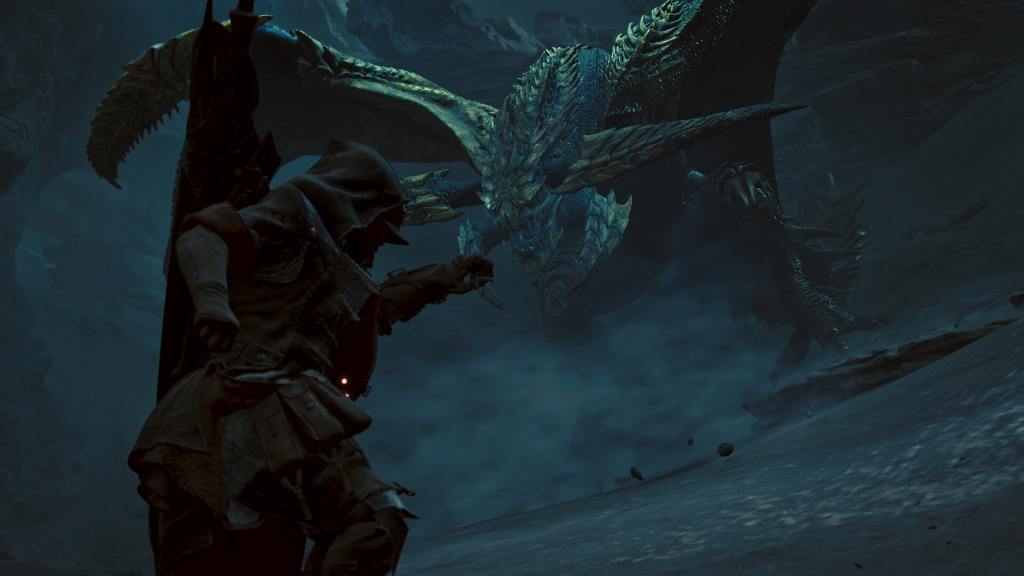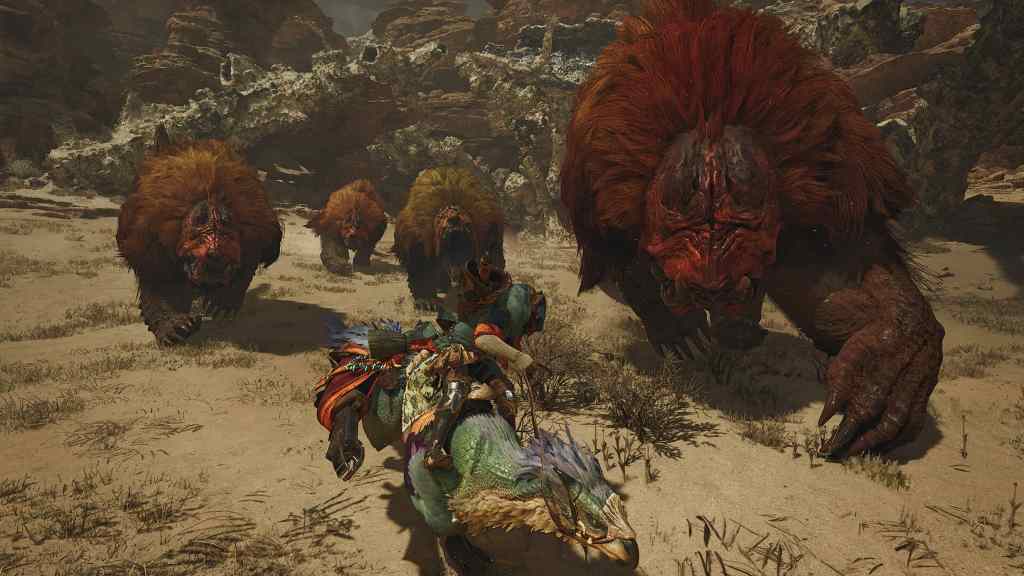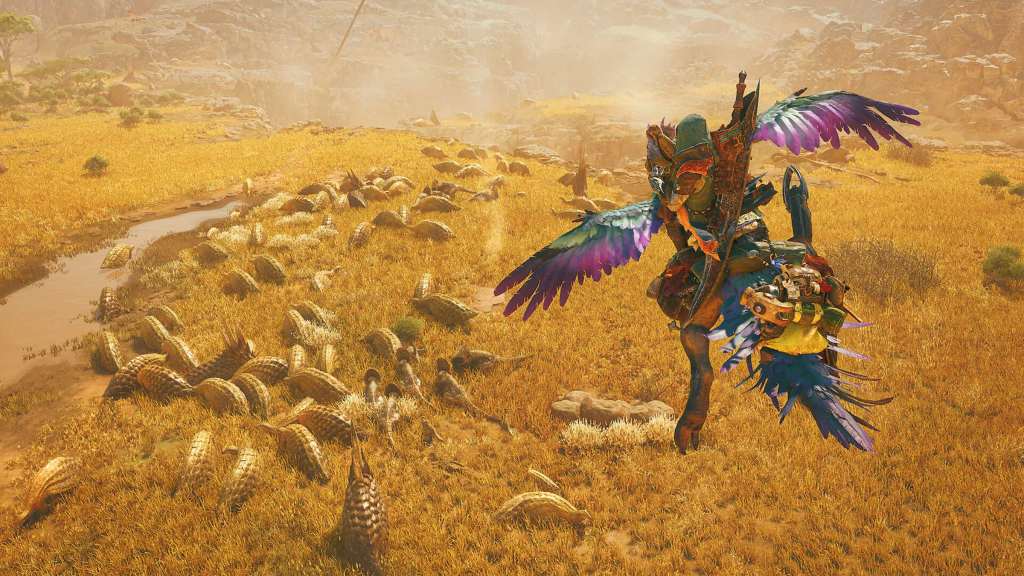Monster Hunter has always been a game that demands your full, undivided attention, pulling you into battles that test patience and skill at every turn. Facing a massive monster is never simple, and victory comes only after you have studied its movements and executed each strike with care. Every new release shifts the way you experience the hunt, introducing environments that challenge while keeping even veterans on their toes. The thrill is not just in the fight itself but in the moments between, as you prepare and anticipate what comes next. In Monster Hunter, every encounter carries weight, and every success leaves a promising lasting impression.
Videos by ComicBook.com
Monster Hunter: Wilds takes that promise further than ever before. It refines long-standing systems while introducing new ones that change how you experience the world and the monsters that inhabit it. From combat to exploration and progression, Wilds has managed to improve on nearly every aspect of the series, creating what might be the most polished and satisfying Monster Hunter experience yet. In this feature, we will break down four areas where Monster Hunter: Wilds does better than any previous entry.
4. Combat Gameplay

The new Focus Mode is perhaps the single most impactful addition to the Monster Hunter combat system. This mode is so powerful that some in the community have debated whether it breaks the balance of the game, but what it really does is highlight how strong the core combat mechanics have always been. Focus Mode allows you to execute attacks with unprecedented precision, chaining combos and timing dodges with pinpoint accuracy. It rewards skillful play in a way that feels deeply satisfying and gives you a new layer of mastery to explore.
Combat in Monster Hunter: Wilds has never felt this responsive or nuanced. The ability to seamlessly chain different weapon types and adapt your approach mid-fight gives encounters a thrilling dynamism that older entries struggled to match. The game feels like it finally understands the balance between accessibility and depth, allowing newcomers to feel powerful without diminishing the challenge for seasoned hunters. Focus Mode makes combat more exciting and more rewarding than ever before, even if it’s just a bit too strong.
3. World Traversal

Traveling through Monster Hunter: Wilds is smoother and more intuitive than in any previous installment. While previous games often made traversing large areas feel cumbersome, Wilds introduces the Seikret, a personal mount that redefines mobility in the series. The Seikret builds directly on the Canyne system from Monster Hunter Rise, taking everything that made mounting in that game fun and adding a deeper level of functionality. It allows you to carry two weapons and swap between them freely while traveling. This flexibility means that hunters can adapt to unexpected monster encounters without losing momentum.
Even better, you can program the Seikret to automatically transport you between waypoints, creating a sort of auto-navigation system. This level of convenience is rare in a series known for its genuinely frustrating-at-times, maze-like maps. Traveling in Wilds no longer feels like a chore. Instead, it complements the exploration and hunting experience, letting you focus on preparation and combat instead of constant backtracking.
2. Monster Ecosystem

Monster Hunter: Wilds takes worldbuilding and ecosystem design to a new level. Monsters are not just targets to hunt; they interact with each other and the environment in ways that feel alive and reactive. Predators and prey engage in natural behaviors that influence your hunt, creating dynamic encounters that change every time you step into an area. Observing these interactions provides strategic insights, allowing you to plan attacks, set traps, and anticipate monster movements. While none of this is necessary to succeed, the fact that they can be used for a benefit is impressive.
The environment itself feels more connected to the monsters than ever before. Elements like weather, terrain, and wildlife now directly impact combat and exploration. You might see a smaller monster provoke a larger one, or natural hazards change the way you approach an encounter. This sense of a living, breathing ecosystem enhances immersion and adds a layer of complexity that previous games in the series could only hint at. Wilds makes hunting feel like a true part of a larger, interconnected world
1. Environmental Complexity

Monster Hunter: Wilds elevates exploration to a level the series has never reached before. Every area is packed with detail, from dense forests to jagged mountain peaks, each with its own hazards, wildlife, and hidden rewards. Unlike previous games, which often felt like long corridors between hunts, Wilds makes every corner worth investigating. You are constantly discovering shortcuts, rare materials, and unexpected monster encounters, giving a real sense of reward for curiosity.
The environments are visually impressive, but more than that, they now directly affect gameplay in much more significant ways. Terrain influences movement and combat, while hazards such as falling rocks, quicksand, or sudden weather changes can transform a routine hunt into a tense challenge. By encouraging you to observe and adapt to their surroundings, Wilds turns exploration into an engaging part of every hunt. Every journey through the world offers new opportunities for strategy and discovery, keeping the experience fresh even after dozens of hours.
What do you think? Leave a comment below and join the conversation now in the ComicBook Forum!









